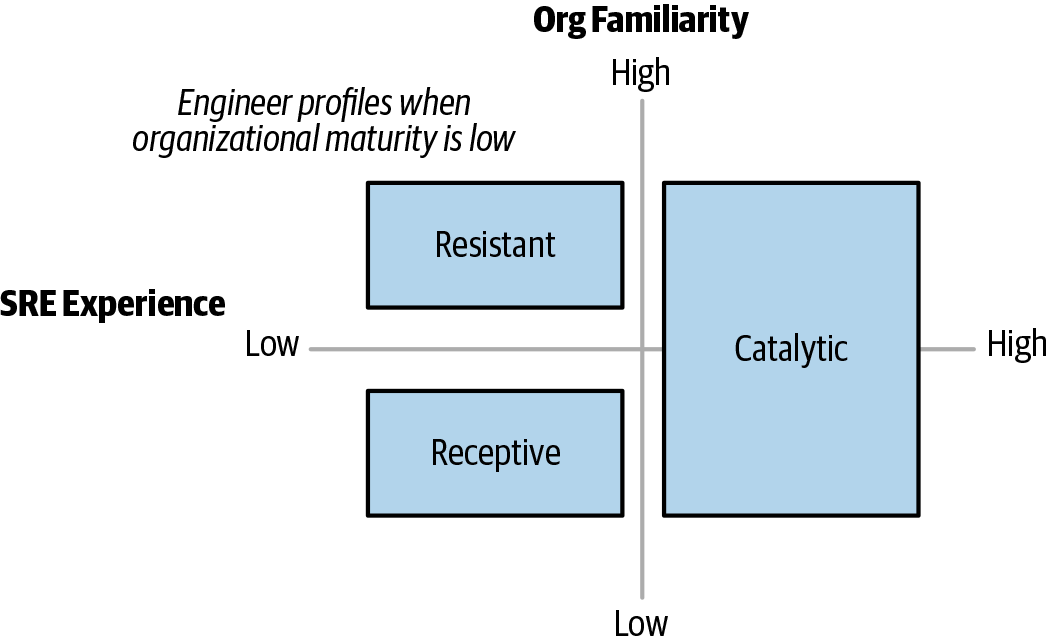Chapter 2. Use Cases
Let’s move on to explore different SRE training use cases, along with optimum approaches and trade-offs to consider. We consider these in terms of the effort/effectiveness continuum that we discussed in Chapter 1 (refer to Figure 1-2).
Organizations Adopting the SRE Model
We first discuss the use case of an organization adopting the SRE model.1 Here, organizational maturity is low, as demonstrated in Figure 2-1. Organizations usually want to adopt SRE principles because they value the benefits of combining high reliability with high feature velocity while achieving lower organizational friction at the same time. Service-level objectives (SLOs), error budgets, and upholding blamelessness when things go wrong make this possible.
Without a doubt, adopting an SRE practice involves an organizational culture shift. Some organizations have been tempted to change the name on the door from “Ops” to “SRE” and declare victory. However, undergoing a shift to SRE is not a branding exercise (i.e., changing the name on the door) but rather a fundamental culture shift that requires buy-in from stakeholders across the organization, all the way up to the very top, in order to be successful.

Figure 2-1. Matrix of SRE training use cases: low organizational maturity
Building a Training Program to Drive Adoption of the SRE Model
Training plays an important role in setting the ...
Get Training Site Reliability Engineers now with the O’Reilly learning platform.
O’Reilly members experience books, live events, courses curated by job role, and more from O’Reilly and nearly 200 top publishers.

